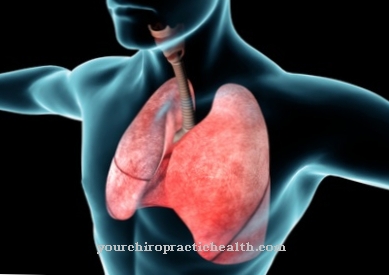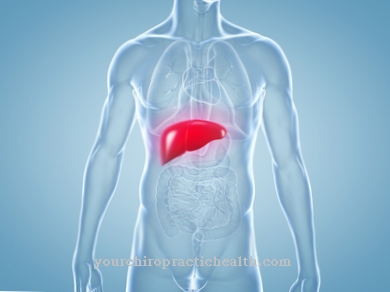The Fatty acid oxidation or Fat burning has its greatest importance in the production of energy for numerous processes in the body. It takes place in the mitochondria of almost all cells. Different hormones, exercise and certain components of a balanced diet can stimulate fat burning.
What is fatty acid oxidation?

Strictly speaking, fatty acid oxidation is a chemical reaction in which the fatty acid releases one or more electrons. These are taken up by another reaction partner, the electron acceptor (Latin, accipere, to accept).
In biochemistry, these metabolic reactions are summarized under the term fat oxidation, which contribute to the provision of energy as b-oxidation, a-oxidation or w-oxidation. These three forms differ in terms of the carbon atom on which the oxidation takes place. The b-oxidation (beta-oxidation) is the most important, with "beta" indicating that the reactions take place on the third carbon atom of the fatty acid.
Fatty acid oxidation is boosted by a number of hormones. Growth hormones, glucagon as an antagonist of insulin and thyroid hormones as well as adrenaline are part of it. Furthermore, various substances that are supplied to the body through a balanced diet promote fat burning. Carnitine facilitates the transport into the cells, magnesium is required for the action of various enzymes and from the amino acid methionine, together with lysine and in the presence of vitamin C, the body can produce carnitine itself.
Function & task
The fat burning ensures that our body has sufficient energy for the uninterrupted building, breaking down and restructuring processes. Fat oxidation occurs in the mitochondria of the cells. These cell organelles are therefore also described as the cells' power plants.
The fatty acid oxidation takes place in several steps. First, the fatty acid must be activated with the participation of coenzyme A as a key molecule. This activated fatty acid enters the mitochondrion with the help of various carnitine transferases. Transferases are enzymes that transfer chemical groups. Carnitine plays an important role in this transport. In the fitness sector, carnitine is used as a dietary supplement because muscle cells need it for energy production.
Once in the mitochondria, the actual breakdown begins. It is subject to a recurring sequence of reaction steps that ends when the end product acetyl CoA has been formed. Depending on the structure of the fatty acid (number of carbon atoms, even or odd, saturated or unsaturated fatty acids), additional steps are necessary. Uneven-numbered fatty acids create a product that can only be used for energy production after conversion in an additional reaction in the subsequent citric acid cycle.
Fat oxidation is ongoing in the body, but to varying degrees. It is determined by the need for energy and depends on physical activity. Fat burning is activated with increasing exercise duration. At the beginning of physical activity, various hormones ensure increased lipolysis, i.e. the breakdown of fats into fatty acids in muscles and adipose tissue. The fats can come from food and from the body's own fatty tissue. The hormone adrenaline contributes to increased lipolysis. Eating a carbohydrate-rich diet increases insulin levels, thereby reducing fat oxidation.
Numerous studies have examined the factors that lead to increased fat burning. Especially in the fitness industry and for weight reduction programs, key figures such as Fatmax (maximum fat burning rate) are consulted and special tests are developed to determine them. In addition to the level of training, the intensity and duration of exercise influence the rate of fat metabolism. Strong individual fluctuations make it difficult to predict which type of physical activity will lead to maximum fat burning in each individual.
Illnesses & ailments
Limited fatty acid oxidation is most common in people who are overweight. The pancreatic hormone insulin makes a contribution to this because it stimulates the fat cells to store fat and inhibits fat burning. Overweight people with very high insulin concentrations therefore find it particularly difficult to reduce weight through fat loss.
In addition, there are congenital disorders in fatty acid oxidation. Important enzymes for the transport and conversion of the fatty acids are missing or not sufficiently available. As a result, the breakdown and thus also the generation of energy is disturbed. In addition, unreacted intermediate products accumulate, which trigger toxic reactions in the muscles, in the brain and in the liver. One group of diseases affects the carnitine metabolism. If too little carnitine is available in the kidneys and muscles, fewer fatty acids are absorbed into the cells of these organs. In preschool age, the affected children show muscle weakness and a dysfunctional heart (heart failure).
The situation worsens particularly dramatically after fasting or after diarrhea. These disorders are treated with the supply of carnitine, often as an injection. If the transporting transferase (carnitine palmitoyl transferase 1 deficiency) is affected, the children show liver and brain damage at an early age.
Another disorder affects another type, carnitine palmitoyl transferase 2. The effects of this deficiency show up in adolescence or adulthood as muscle weakness after stress, infections and food breaks. A low-fat, high-carbohydrate diet and added triglycerides improve the condition.
If the mitochondrial reaction is affected rather than the actual beta oxidation, this may be caused by a defect in the dehydrogenase enzyme. If the medium-chain acyl-CoA dehydrogenase (MCAD deficiency) is not available in sufficient quantities, life-threatening situations arise if left untreated. The lack of dehydrogenases, which convert very long-chain fatty acids (VLCAD deficiency), leads to damage that affects the heart and leads to a drop in blood sugar concentration. As a therapy, patients with both forms of dehydrogenase deficiency receive large amounts of carbohydrates and a mixture of medium-length or longer fatty acids adapted to the cause of the disease.



.jpg)









.jpg)

.jpg)
.jpg)











.jpg)